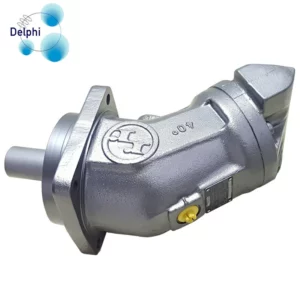What is the significance of the pump displacement control in a A4VG Series Pump system?
The pump displacement control in a hydraulic system, such as the A4VG Series Pump, is a crucial feature that allows for the adjustment of the pump’s displacement. The displacement control mechanism determines the volume of fluid delivered by the pump per revolution or per stroke. China A4VSO Series Pump supplier The significance of pump displacement control lies in its impact on the flow rate, system efficiency, and overall performance of the hydraulic system.
Here are some key points regarding the significance of pump displacement control:
- Flow Rate Adjustment:
- Pump displacement control enables the adjustment of the flow rate delivered by the hydraulic pump. By changing the pump’s displacement, the system can meet varying demands for hydraulic fluid in different operating conditions.
- Variable Output:
- The A4VG Series Pump is often designed as a variable displacement pump. This means that the displacement can be varied to provide a variable output. The ability to vary the pump output is essential for applications where different levels of hydraulic power are required.
- Energy Efficiency:
- Adjusting the pump displacement allows for energy-efficient operation. By matching the pump output to the actual requirements of the system, excess energy consumption can be avoided, contributing to improved overall energy efficiency.
- Control of Actuators:
- In hydraulic systems, the pump supplies fluid to various hydraulic actuators (cylinders or motors) to perform work. By controlling the pump displacement, the speed and force of these actuators can be precisely adjusted to meet the demands of the application.
- Pressure Control:
- Pump displacement control influences the system pressure. The pump’s output pressure is closely related to its displacement. Proper control of pump displacement helps maintain the desired pressure levels within the hydraulic system.
- Temperature Regulation:
- Controlling the pump displacement can also impact the temperature of the hydraulic fluid. Adjusting the flow rate to match the system’s needs helps manage heat generation, preventing excessive temperatures that could affect the system’s components.
- Noise Reduction:
- By optimizing the pump displacement based on the system’s requirements, A4VG Series Pump manufacturer noise levels can be minimized. Unnecessary high flow rates can contribute to increased noise in hydraulic systems.
- System Flexibility:
- The ability to control pump displacement adds flexibility to the hydraulic system, allowing it to adapt to different operating conditions and varying loads.
- Extended Component Life:
- Properly matching the pump output to the system’s requirements through displacement control helps reduce unnecessary stress on components, contributing to extended component life.
In summary, pump displacement control in an A4VG Series Pump system is significant for its role in adjusting flow rates, optimizing energy efficiency, controlling pressure, and providing flexibility to meet the varying demands of hydraulic applications. Proper utilization of displacement control contributes to the overall effectiveness and longevity of the hydraulic system.
